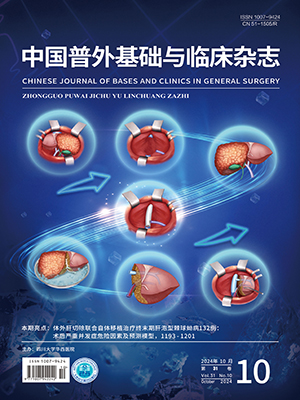Objective To explore surgical technique and clinical outcome of transabdominal preperitoneal hernia repair (TAPP) and totally extraperitoneal hernia repair (TEP) in inguinal hernia repair.
Methods 〗The clinical data of 23 patients underwent laparoscopic herniorrhaphy were retrospectively analyzed. Nine patients were underwent TAPP, and 14 patients underwent TEP.
Results 〗None of patients was changed to open operation. Only one patient of TEP was changed to TAPP. Average operative time was (82.1±40.6) min. Blood loss was (5.7±3.0) ml. Disruption of peritoneum happened to 2 patients underwent TEP. The rate of postoperative complications was 21.7% (5/23), which included serum swelling (1 case), scrotal emphysema (2 cases), transient neurapraxia in the area of repair (1 case) and urinary retention (1 case). No chronic pain, foreign body sensation and infection were found. Average hospitalization after operation was (4.3±0.9) d. No recurrence was observed during a follow-up period of 1-15 months.
Conclusion 〗Laparoscope herniorrhaphy is safe due to lower recurrence and complications. It also has the advantages of slight pain and rapid recovery.
Citation: ZENG Hui,LI Feng. Analysis of Surgical Technique and Clinical Outcome of Laparoscopic Inguinal Hernia Repair. CHINESE JOURNAL OF BASES AND CLINICS IN GENERAL SURGERY, 2009, 16(2): 98-101. doi: Copy




